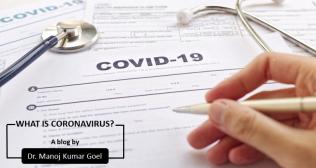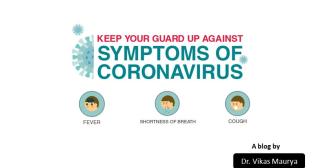
Pneumonia: Diagnosis and Treatment
It often starts with something that feels familiar. A cough that follows a cold, a lingering fatigue, or a fever that just will not break. You tell yourself it is just a chest cold, that you just need to rest. But then the chest pain starts, or you find yourself breathless after walking a few steps. This is the moment when a common illness can cross the line into something much more serious. This is the reality of pneumonia, an infection of the lungs that demands respect and proper medical care.
Understanding how doctors approach a pneumonia diagnosis and why they choose a specific course of pneumonia treatment can demystify the process. It helps you become an active partner in your own recovery. This knowledge is not meant to replace your doctor's advice, but to empower you with the clarity and confidence to navigate your path back to health.
What Happens in the Lungs During Pneumonia
To understand pneumonia, it helps to picture your lungs. They are made up of millions of tiny, elastic air sacs called alveoli. Think of them as tiny balloons. When you breathe in, these sacs fill with air, allowing oxygen to pass into your bloodstream.
Pneumonia is an infection that causes inflammation in these air sacs in one or both lungs. In response to the infection, the alveoli fill with fluid or pus. This prevents them from filling with air properly. This is why you feel short of breath. The oxygen has a much harder time getting through the fluid to reach your blood. It is this internal process that causes the classic symptoms of cough, fever, chills, and difficulty breathing.
The Path to an Accurate Pneumonia Diagnosis
One of the most important jobs for a physician is to distinguish pneumonia from other respiratory illnesses like bronchitis or a severe cold. A precise pneumonia diagnosis is not just about confirming the infection; it is about understanding its severity and guiding the right treatment. This is a step-by-step process.
The Physical Examination
The first step is always a thorough physical exam. Your doctor will ask you detailed questions about your symptoms, your medical history, and any recent illnesses. The most critical part of this exam involves listening to your lungs with a stethoscope. Healthy lungs sound clear. Lungs affected by pneumonia often have very distinct sounds. Your doctor may hear crackling, bubbling, or rumbling sounds as you breathe. These sounds are a tell-tale sign that there is fluid in your air sacs.
A Picture of the Lungs with a Chest X-ray
While a physical exam provides strong clues, a chest X-ray is the most reliable tool for confirming a pneumonia diagnosis. An X-ray can show the exact location and extent of the infection inside your lungs. The fluid-filled areas of the lung will appear as a white or opaque patch on the X-ray, which is normally dark because it is filled with air. This image not only confirms the diagnosis but also helps rule out other potential causes of your symptoms.
Additional Tests for a Clearer Picture
In some cases, especially if you are hospitalized, your doctor may order additional tests to get more information. A pulse oximetry test, which involves a small clip on your finger, measures the oxygen level in your blood. This is a quick, painless way to see how well your lungs are working. Blood tests can help confirm the presence of an infection and can sometimes give clues as to what type of germ is causing it.
The Cornerstones of Pneumonia Treatment
Once the diagnosis is confirmed, the focus shifts entirely to recovery. The goal of pneumonia treatment is twofold: to clear the infection from your body and to manage your symptoms so you can rest and heal. The specific plan will depend on the cause of your pneumonia, your age, and your overall health.
Choosing the Right Pneumonia Medication
The most important decision in your treatment is selecting the right pneumonia medication. This choice depends entirely on the germ causing the infection.
Bacterial Pneumonia: This is the most common type. The primary treatment involves antibiotics for pneumonia. These powerful medications are designed to kill the specific bacteria causing the infection. It is absolutely essential that you take the full course of antibiotics exactly as prescribed, even if you start to feel better after a few days. Stopping early can allow the infection to return and can contribute to antibiotic resistance.
Viral Pneumonia: Viruses, like the ones that cause the flu or COVID-19, can also lead to pneumonia. In this case, antibiotics are completely ineffective. The main course of pneumonia treatment for viral causes is supportive care. In some cases, your doctor may prescribe an antiviral medication, but these are most effective when started very early in the course of the illness.
Supportive Care Is Just as Important
Your body's immune system does the heavy lifting in fighting off the infection, and it needs support. This is a critical part of the treatment for pneumonia in adults and children alike.
Rest: You will likely feel very tired. Rest is not optional; it is a prescription. Your body needs to conserve its energy to fight the infection.
Hydration: Fever can cause you to lose fluids. Drinking plenty of water, broth, or electrolyte solutions is essential to prevent dehydration and to help thin the mucus in your lungs, making it easier to cough up.
Fever and Pain Control: Over-the-counter medications like acetaminophen or ibuprofen can help reduce your fever, relieve the muscle aches, and ease the chest pain associated with coughing.
When Hospitalization Is Necessary
Most cases of pneumonia can be safely treated at home. However, some situations require hospitalization. This is a crucial aspect of the treatment for pneumonia in adults who are older or have other health problems. You may need to be admitted to the hospital if you are experiencing severe shortness of breath, have a very low oxygen level, are confused, or have a pre-existing condition like heart failure or COPD that makes your pneumonia more dangerous. In the hospital, you can receive oxygen therapy, intravenous antibiotics, and close monitoring.
A Proactive Partnership in Your Recovery
Pneumonia is a serious illness, but it is also a treatable one. An accurate diagnosis and a targeted treatment plan are the keys to a full and successful recovery. It is a process that requires a strong partnership between you and your healthcare provider.
Your role in this partnership is to follow the treatment plan diligently and to give your body the rest it needs to heal. Do not hesitate to communicate with your doctor about your progress or any new concerns. This active participation ensures the best possible outcome.
Frequently Asked Questions
Q1. How long does it take to recover from pneumonia?
Ans. Recovery time varies widely depending on your age, the severity of the illness, and your overall health. Some people feel better within a week, but for many, the fatigue can linger for a month or even longer. It is important to be patient with your body.
Q2. Is pneumonia contagious?
Ans. The germs that cause pneumonia, like bacteria and viruses, are contagious. They can be spread through droplets from a cough or sneeze. However, this does not mean that everyone who is exposed to these germs will get pneumonia.
Q3. When should I start to feel better after starting antibiotics for pneumonia?
Ans. If you have bacterial pneumonia, you should generally start to feel some improvement within 48 to 72 hours of starting your antibiotics for pneumonia. If you are not feeling better after three days, or if you are feeling worse, you should contact your doctor immediately.
Q4. Can I do anything to prevent pneumonia?
Ans. Yes. One of the best preventive measures is to get vaccinated. The pneumococcal vaccine helps protect against a common type of bacterial pneumonia, and your annual flu shot can prevent influenza-related pneumonia. Good hygiene, like frequent hand washing, and not smoking are also very effective.



















